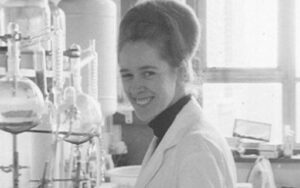 The transfer of many embryos can result in multiple pregnancies, which is considered high risk. Multiple pregnancies are associated with uncomfortable complications for the mother, which includes gestational diabetes, high blood pressure and early labor. In addition, multiple pregnancies may cause premature birth, leading to respiratory complications, feeding problems and increased chances of infection in the fetus. Therefore, the ideal outcome of ART procedures is pregnancy with a single fetus.
The transfer of many embryos can result in multiple pregnancies, which is considered high risk. Multiple pregnancies are associated with uncomfortable complications for the mother, which includes gestational diabetes, high blood pressure and early labor. In addition, multiple pregnancies may cause premature birth, leading to respiratory complications, feeding problems and increased chances of infection in the fetus. Therefore, the ideal outcome of ART procedures is pregnancy with a single fetus.How Many Embryos to Transfer with Assisted Reproductive Technology?
Assisted reproductive technology (ART) procedures may require the transfer of embryos to a woman’s uterus to start a pregnancy. Embryo transfer from the laboratory to a woman’s womb is an important step, and choosing the optimal number of embryos will help prevent medical complications. The transfer of many embryos can result in multiple pregnancies, which is considered high risk. Multiple pregnancies are associated with uncomfortable complications for the mother, which includes gestational diabetes, high blood pressure and early labor. In addition, multiple pregnancies may cause premature birth, leading to respiratory complications, feeding problems and increased chances of infection in the fetus. Therefore, the ideal outcome of ART procedures is pregnancy with a single fetus.
The transfer of many embryos can result in multiple pregnancies, which is considered high risk. Multiple pregnancies are associated with uncomfortable complications for the mother, which includes gestational diabetes, high blood pressure and early labor. In addition, multiple pregnancies may cause premature birth, leading to respiratory complications, feeding problems and increased chances of infection in the fetus. Therefore, the ideal outcome of ART procedures is pregnancy with a single fetus.
 The transfer of many embryos can result in multiple pregnancies, which is considered high risk. Multiple pregnancies are associated with uncomfortable complications for the mother, which includes gestational diabetes, high blood pressure and early labor. In addition, multiple pregnancies may cause premature birth, leading to respiratory complications, feeding problems and increased chances of infection in the fetus. Therefore, the ideal outcome of ART procedures is pregnancy with a single fetus.
The transfer of many embryos can result in multiple pregnancies, which is considered high risk. Multiple pregnancies are associated with uncomfortable complications for the mother, which includes gestational diabetes, high blood pressure and early labor. In addition, multiple pregnancies may cause premature birth, leading to respiratory complications, feeding problems and increased chances of infection in the fetus. Therefore, the ideal outcome of ART procedures is pregnancy with a single fetus.Suggested for you
Subscribe to stay in the loop
Our newsletter delivers expert insights, practical benefit strategies, heart warming member
moments, and the latest in fertility and family-building news straight to your inbox.



